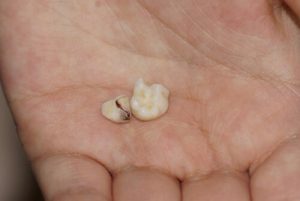If you’ve recently had a filling and are still experiencing pain months later, you’re not alone. Many people expect immediate relief from tooth pain after a filling, but in some cases, lingering discomfort, sensitivity, or sharp pain can persist, raising the question: Why does my tooth filling hurt after months? This post delves into the possible reasons behind this common issue and offers insights into what you can do to find relief.
Understanding Tooth Sensitivity After a Filling

Common Causes for Pain After a Filling
Several factors could contribute to pain or sensitivity in your filled tooth. Let’s break down the most common reasons:
Nerve Irritation or Inflammation
A filling involves drilling into the tooth to remove decay, which can sometimes disturb the nerves inside the tooth. This irritation can result in tooth sensitivity or even persistent pain. If the pain worsens or throbs without any triggers, it may indicate an affected tooth nerve requiring further dental treatment, like a root canal.
Incorrect Bite Alignment
After a filling, it’s essential to ensure your bite aligns correctly. If the filling sits too high, it can create uneven pressure when you chew. This incorrect bite alignment can cause discomfort or throbbing pain. Adjusting the filling might be necessary to relieve the sensitivity and prevent additional strain on the affected tooth.
Allergic Reaction to Filling Material
Although rare, an allergic reaction to the filling material can cause inflammation and sensitivity. Amalgam fillings, which contain metals, may lead to discomfort for patients with metal sensitivities. Replacing the filling with a hypoallergenic material may alleviate this issue.
Could Tooth Decay Be the Cause?
In some cases, tooth decay could still be present even after a filling. If not all decay was removed before the filling was placed, or if further decay has developed, this could lead to discomfort or pain over time. When left untreated, it could spread deeper into the tooth, potentially affecting the nerve and causing extreme pain. Timely treatment and proper oral hygiene can help manage this.
Types of Pain You Might Experience
Different types of pain can signal different issues with your filled tooth. Here are some of the most common:
Throbbing Tooth Pain
This could indicate nerve damage or irritation from a deep filling. Throbbing pain often suggests that the tooth’s nerve is affected, potentially requiring a root canal if the pain persists.
Sharp, Jabbing Pain
If you experience sharp pain when biting down, the filling could be interfering with your bite alignment. A quick adjustment from your dentist may relieve this sharp pain, restoring comfort.
Sensitivity to Hot or Cold
If your filled tooth is sensitive to hot or cold temperatures, it could be a sign of minor nerve irritation, often triggered by temperature changes. Desensitising toothpaste can be helpful for managing this type of sensitivity.
Persistent Sensitivity
Sensitivity that lingers for months could indicate that the nerve is highly irritated or that the filling material is not compatible with your tooth. Cold foods, whitening toothpaste, or even pressure while chewing can exacerbate this issue.
Less Common Causes of Pain After a Filling
While many cases of post-filling pain are due to nerve irritation or bite misalignment, there are some less common causes that could be behind your discomfort. Understanding these factors can help you work with your dentist to identify the root of the problem and find effective solutions. Let’s explore a few of these less typical but important causes of lingering pain after a filling.
Gum Disease
If your gums are receding or inflamed due to gum disease, you may feel heightened sensitivity in the filled area. Addressing gum health through good oral hygiene and regular visits to your dentist can help mitigate this pain.
Cracked or Damaged Filling
A filling can be damaged from daily wear, grinding teeth, or chewing hard foods. A damaged filling exposes your tooth’s nerve, which can lead to pain, especially when consuming hot or cold foods. If you suspect your filling is cracked or damaged, see your dentist for a replacement.
Allergic Reaction or Sensitivity to Particular Materials
Some patients might experience discomfort if the filling contains materials they are allergic to, such as amalgam. If you suspect this could be the cause, ask your dentist about alternative filling materials.
Oral Infection
Sometimes, an oral infection near the filled tooth can cause pain and sensitivity. A mouth rinse may help with mild irritation, but severe infections may require antibiotics or further dental work.
Managing Tooth Sensitivity After a Filling
If you’re experiencing tooth sensitivity weeks or even months after a filling, there are several ways to manage and reduce your discomfort:
- Desensitising Toothpaste: This toothpaste can help reduce mild tooth sensitivity, especially if it’s triggered by cold foods.
- Soft-Bristled Toothbrush: A gentle brush can help prevent gum recession, reducing sensitivity near filled areas.
- Avoid Whitening Toothpaste: Whitening toothpaste can be abrasive, worsening sensitivity. Switch to a gentle formula designed for sensitive teeth.
- Watch What You Eat: Avoid particularly hot or cold food and drinks, which can trigger sensitivity.
- Mouth Rinse for Oral Health: Using a mouth rinse can help soothe irritated gums and prevent bacteria build-up around the filling.
When Should You Seek Immediate Treatment?
If the pain after a filling is severe, persists for months, or worsens over time, it’s crucial to consult your dentist. There are cases where a root canal, a replacement filling, or other dental procedure may be necessary to resolve the problem.
Pain Lasting More Than Two to Four Weeks
If sensitivity or pain continues beyond this time, consult your dentist. They may check for issues with the filling or any potential infections.
Swelling or Extreme Pain
Swelling around the filling could indicate an infection, which needs immediate treatment to prevent it from spreading.
Pain When Chewing or Biting
If your filled tooth hurts when chewing or biting, it could be due to an incorrect bite alignment. A quick adjustment from your dentist may be all you need.
How to Prevent Tooth Pain After a Filling
Taking a few preventive steps can help avoid prolonged pain and sensitivity after a filling:
- Good Oral Hygiene: Brushing twice a day and flossing daily helps prevent further decay around the filled tooth.
- Visit Your Dentist Regularly: Regular check-ups ensure that your fillings remain in good condition.
- Avoid Hard Foods: Avoid biting down on hard foods, which could damage the filling or even lead to a cracked tooth.
- Manage Teeth Grinding: If you grind your teeth, wearing a night guard can protect your filled tooth from excess pressure.
Understanding How Different Filling Materials Impact Sensitivity
Each filling material has unique properties that can impact how it interacts with your natural tooth structure and how it conducts temperature. Here’s how some popular materials may affect sensitivity levels:
- Composite Resin: The most common material, composite resin closely matches the natural colour of teeth. While durable, composites can sometimes shrink during the curing process, which may create gaps or cause pressure on the tooth nerve. These gaps allow bacteria to penetrate, causing further sensitivity or even decay beneath the filling if untreated.
- Amalgam Fillings: While amalgam fillings are known for their strength and durability, they contain metals like silver and mercury, which are highly conductive. This means they can heighten sensitivity to hot and cold foods. Over time, metal fillings may also expand and contract with temperature changes, increasing the risk of cracks or breaks in the filled tooth.
- Gold and Ceramic Fillings: These materials are less likely to cause sensitivity and are well-suited for larger restorations. However, they are costly and require more invasive procedures. Gold, in particular, is durable but can cause galvanic reactions if placed next to other metals, leading to tingling or electric-like sensitivity.
Understanding the pros and cons of each material can be useful if your dentist recommends a replacement filling. Discussing your options and any potential for sensitivity can help ensure you receive the best material for your needs and comfort.
Could Tooth Grinding Be Adding to the Pain?

Key Takeaway: Understanding and Addressing Tooth Pain After a Filling
Pain months after a dental filling can have many causes, from bite alignment issues and nerve irritation to allergies and gum disease. It’s essential to stay vigilant and address any pain or sensitivity with your dentist. Timely treatment can help avoid complications, allowing you to enjoy long-term comfort.
If you’re experiencing tooth pain that doesn’t seem to subside, it’s better to be safe than sorry. Reach out to Finesse Dental at (02) 8806 0790 to discuss the symptoms, and work together to find a solution that restores comfort to your smile.
References:
Cleveland Clinic. (n.d.). Gum (periodontal) disease. Retrieved from https://my.clevelandclinic.org/health/diseases/21482-gum-periodontal-disease
Healthline. (n.d.). Composite fillings: What are composite fillings?. Retrieved from https://www.healthline.com/health/dental-and-oral-health/composite-fillings
Mayo Clinic. (n.d.). Sensitive teeth: What treatments are available? Retrieved from https://www.mayoclinic.org/healthy-lifestyle/adult-health/expert-answers/sensitive-teeth/faq-20057854
Saratti, C. M., Benaduce, F. G., & Passanezi, B. (2022). Factors affecting clinical success of composite restorations in posterior teeth: A systematic review and meta-analysis. BMC Oral Health, 22(1), Article 2558. https://doi.org/10.1186/s12903-022-02558-8


